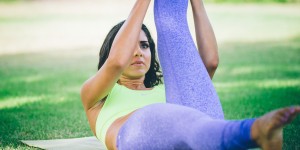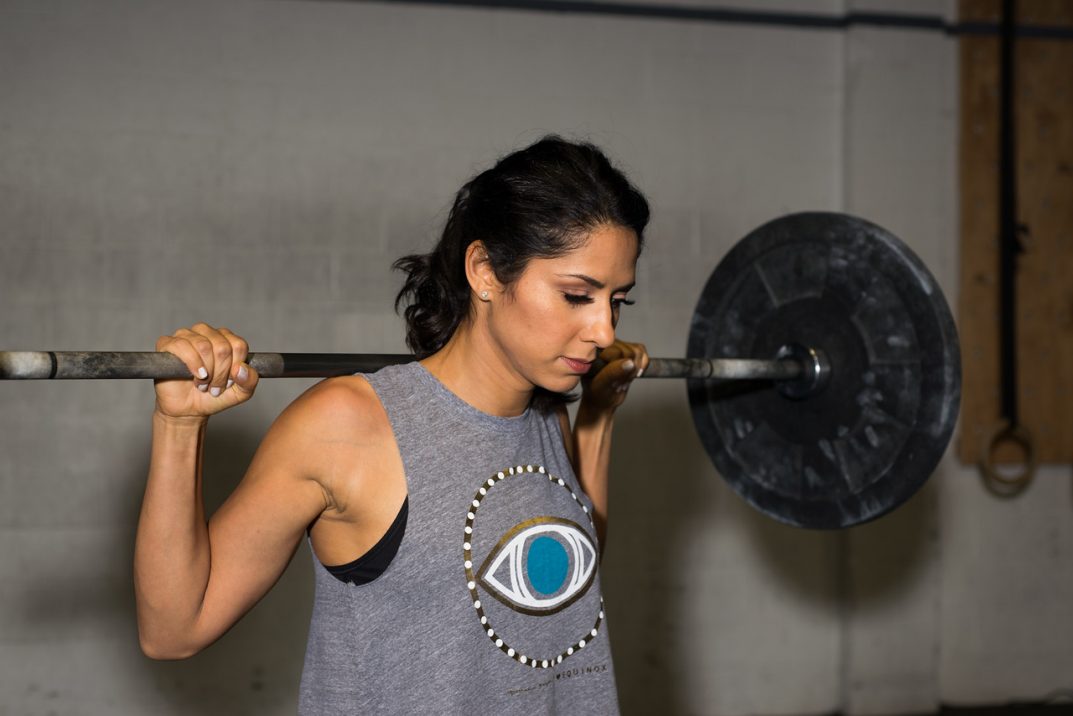Let’s break down what it takes to start barbell training because there’s a lot of misconceptions out there about it and it can be very intimidating to start.
Barbells aren’t necessary or right for every body, and most healthy individuals might not need to learn more than just a few basic barbell exercises in their lifetime. It all depends on your goals and where you’re at in your fitness journey. I for one didn’t really get into heavy barbell training until I started Olympic weightlifting. Up until then I had only done back and front squats with the barbell and that was good enough for me.
However, if you’re curious about barbell training and want to get comfortable with it, there’s a few key points you should know about getting there.
Start with the right equipment
Much like getting a college degree doesn’t actually prepare you for the workforce, having worked out for years on the machines or in a team sport capacity doesn’t actually mean you’re ready to pick up a barbell. You have to start at entry-level like everyone else and earn your right to barbell training.
That means learning how to move well, building strength, and getting enough weight training experience under your belt with tools like dumbbells and kettlebells. These are the easiest way to progress into barbell training without actually touching a barbell, and generally how I progress most of my clients.
Build a solid base first
The easiest way to build a strong foundation of good movement and strength is to work with someone who knows it better than you. Maybe that’s a personal trainer, attending a group fitness class, or following a structured program that takes you from bodyweight to dumbbells to barbells. I don’t recommend doing it alone but if you must learn about good barbell form and technique on your own then make sure you’re looking to credible coaches online. I recommend Steph Gaudreau, Annie Miller, Tony Gentilcore, Michael Anderson, Eric Cressey, Molly Galbraith (from Girls Gone Strong), just to name a few.
Training is a patience game and anyone who’s lifted long enough can probably tell you they didn’t reach the barbell stages until maybe months or years of working out consistently. Starting with dumbbells is the easiest and least intimidating way I can think to start building your confidence, strength, and ability to take on the barbell. It’s also safer than picking up a barbell on Day 1 because let’s face it, barbells are very dangerous pieces of equipment.
Plan your accessory work with intention
This is something I heard from the guys over at Active Life podcast and I couldn’t agree more. Do you know why you’re doing a certain accessory exercise? Are you doing barbell hip thrusts because you saw Kate Upton do it on Instagram? Are you doing inverted rows because it looks really cool and tough? Are you jumping all over a damn stability ball because you want to join the circus? (maybe you do….)
Accessory work should be just as purposeful as the main lift, and that applies whether you’re training with barbells or not. They require progressions and intent. For example, if someone needs to build up their barbell bench press I’m going to hit them up with tricep work (dips, extensions, etc) and get them benching with dumbbells to build up some muscle mass in that area. What I won’t do is make them do a bunch of arm curls and burpees because those exercises aren’t going to carry over as well into their bench press. If you don’t know why you’re doing a certain exercise then maybe you shouldn’t do them. Have a game plan for your workouts and accessory work. Don’t just show up and wing it.
Work your mobility like it’s a full-time job
The mobility needs of a barbell trainee are a lot more demanding than those working strictly with dumbbells and kettlebells. There’s more room for error with a barbell lift and the risk for injury is exponentially higher than with other equipment. If you want to venture into strength sports like the Oly lifts or powerlifting, then your mobility work becomes just as critical to your success on the platform as the workout itself.

For example, the back squat needs ample amounts of ankle and hip mobility; the front squat requires a ton of core stability and shoulder mobility; and movements like the deadlift need a combination of everything. Women especially have different mobility needs then men, so it’s important that ladies work their mobility with as much intent as the workout itself.
Know your progressions and regressions
Knowing the progressions and regressions for an exercise comes with experience but also ties in nicely with point #3. If you’re training with purpose and know why you’re doing a certain exercise then it makes it that much easier to progress or regress an exercise. This is important to know because a) you may not always have the equipment you need at your disposable, especially if you’re at the gym at peak time and b) You may want to level up or take a step down depending on how you feel that day.
We can’t always train under optimal conditions. Platforms are unavailable, the equipment you need disappears, you forget your shoes, your sports bra is on inside out, the AC broke….trust me, a LOT can go wrong. Knowing how to progress or regress and exercise allows you to workout even if conditions aren’t perfect.
Ok, ok, Trish but how do I know when I’m ready for barbells?
This is such a great question and I’m going to tackle it with the most annoying response ever….
….it depends.
It depends on your ability, your strength/fitness level, your goals, and how long you’ve been at this. Meaning, there is no one-size-fits-all answer.
When I first started Olympic weightlifting I trained with a PVC pipe. Thats’ right, I didn’t even get to touch a barbell on Day 1 despite having worked in fitness for years. But I knew the fundamentals of a squat and hinge. I knew that there was going to be some form and technique differences I’d have to address in using a barbell, and I had to be patient with it. Holding a barbell in your hands for a strict press is NOT the same as holding a dumbbell or a kettle bell for the same movement. Different equipment requires slightly different technique.
My girl Annie Miller (who was featured in THIS article) wrote a piece about the 5 Must Know Tips for Barbell Training that everyone should read. It sums up a lot of what I have to coach my clients to do when we start working with barbells and what YOU should know, too. It doesn’t matter how long you’ve been strength training, you simply can’t let your ego lead the charge when you start.
Now what?
Tackling the barbell is so rewarding and fun and once you have it down, it’s something you can train with for life. If you’re ready to start building up to that by enhancing your mobility you can get my Pilates FloWOD online course to master the flexibility and stability needs for some serious barbell work.


Comments 1
Pingback: 3 Tips Before You Start Barbell Squatting - Barbell Pilates with Trish DaCosta